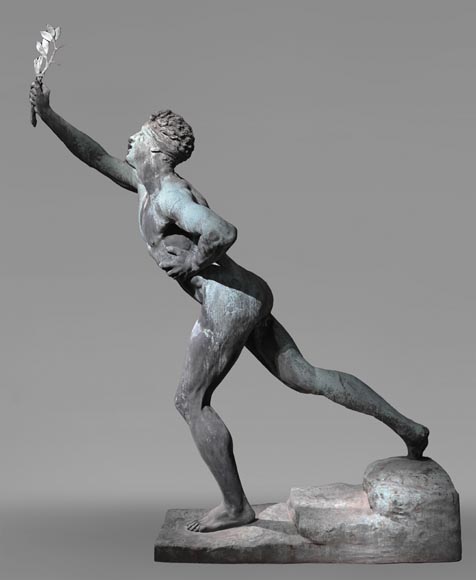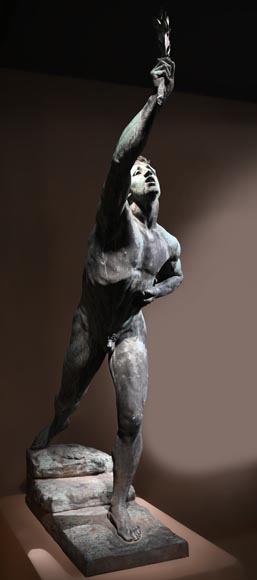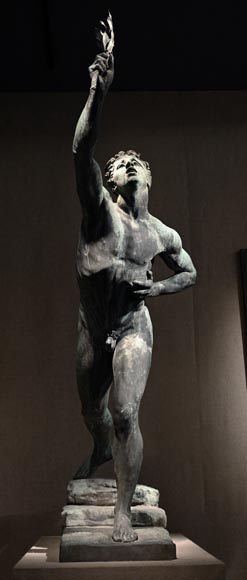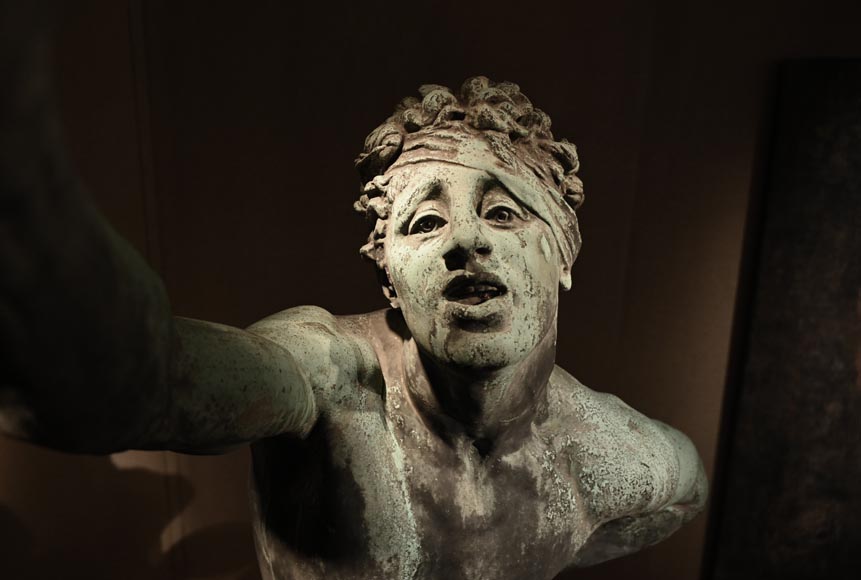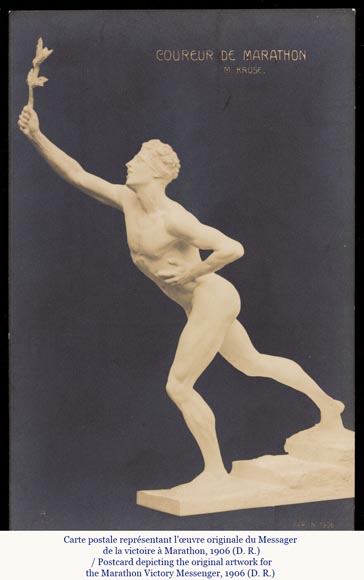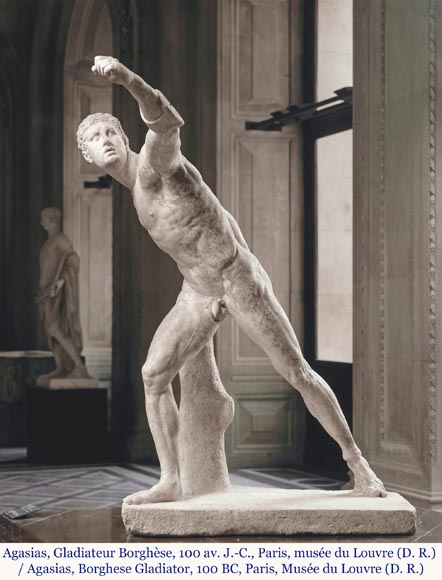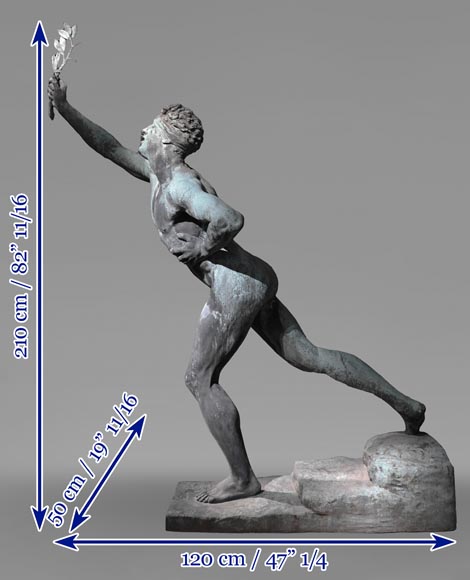Style Other / Ref.15275
Max KRUSE, Messenger of the Victory in Marathon, circa 1900
Dimensions
Width 47'' ¼ 120cm
Height 82'' ⅝ 210cm
Depth: 19'' ¾ 50cm
Origin:
20th century
Status:
Good condition
The Messenger of the Victory at Marathon was executed by the sculptor Max Kruse around 1900.
Max Kruse (Berlin, 1854-1942) was a German sculptor based in Berlin, where he was a member of the Association of Berlin Artists from 1883 to 1891. In 1908, he joined the Berlin Secession and from 1913, he was a member of the Berlin Academy of Arts.
The subject he addresses here is rooted in the legend surrounding the origin of the marathon: tradition recounts that in 490 BC, a certain Pheidippides ran the distance from Marathon to Athens, approximately 40 km (the marathon race requires running 40.195 km, or 24.855 miles), to announce the victory just won against the Persians. He is said to have died of exhaustion following this run.
The extreme effort visibly exerted by the subject shows that he is at the end of his run, which, for him, means death. He holds in his hand a laurel branch announcing the victory won by the Greeks, but also the victory he achieves in completing this mission. The expressiveness of his face with drooping eyelids, dilated pupils, and open mouth showing his teeth, as well as the band falling to one side of his face, qualifies the classicism implemented in the body’s representation. The sculptor was likely inspired by the sculptural group representing Laocoön and His Sons, a pinnacle of expression in ancient sculpture; one of the two young men depicted has expressive features similar to those of our runner. The hand placed on the side of the young messenger enhances the rendering of this almost superhuman effort.
The representation of the messenger’s body, nude and athletic, testifies to the influence of ancient statuary on the sculptor. The diagonal adopted, extended by the raised arm brandishing the laurel, indeed evokes the composition of the Borghese Gladiator, nuanced by the momentum taken by the runner.
The original work, executed in 1881, is housed in the Alte Nationalgalerie Berlin; it appears on a postcard published in 1906. There are numerous bronze casts like ours, life-size, and another that was auctioned at Bonhams in 2009. The latter, signed by the Gladenbeck & Sohn foundry, is 52 cm (20.47’’) high and bears an inscription on the base: NENIKHKAMEN, meaning “we are victorious”; thus, the message of victory is doubly expressed. Many statuettes disseminated this model.
Informations
Price: on request
Recommended for you :
Dimensions:
Width: 10
Height: 24
Depth: 11
Dimensions:
Width: 8
Height: 23
Depth: 14
Dimensions:
Width: 57
Height: 145
Depth: 20
Dimensions:
Width: 25
Height: 43
Depth: 23
Dimensions:
Width: 23
Height: 45
Depth: 17
Dimensions:
Width: 43
Height: 100
Depth: 33
Dimensions:
Width: 72
Height: 31
Depth: 18
Dimensions:
Width: 23
Height: 38
Depth: 11
Dimensions:
Width: 8
Height: 35
Depth: 10
Dimensions:
Width: 91
Height: 18
Depth: 14
Dimensions:
Width: 28
Height: 43
Depth: 43
Dimensions:
Width: 10
Height: 23
Depth: 8



